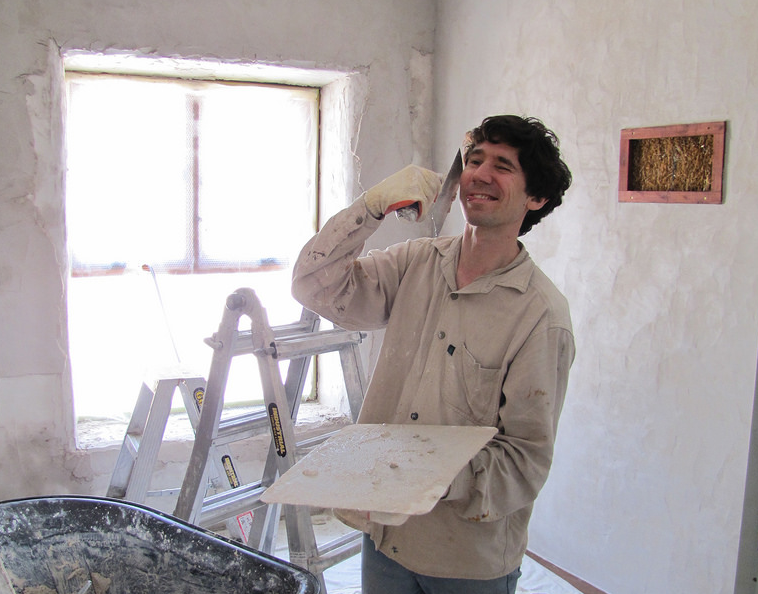Ornamental Plastering: Add One-of-a-kind Touches to Your Home's Interior
Ornamental Plastering: Add One-of-a-kind Touches to Your Home's Interior
Blog Article
A Comprehensive Guide to Mastering Plastering Abilities for Your Improvement Requirements

Vital Devices and Materials
Various vital tools serve distinctive objectives, guaranteeing efficiency and precision throughout the plastering procedure. A top quality trowel, for circumstances, is indispensable for using and smoothing plaster, while a hawk provides a stable platform for holding the material.
In enhancement to tools, picking the right plastering materials is important. Gypsum-based plasters are commonly favored for their convenience and simplicity of use, while cement-based choices are ideal for exterior applications due to their sturdiness. Water and bonding agents play considerable duties in accomplishing correct uniformity and adhesion, making certain that the plaster sticks effectively to the surface.
Moreover, safety equipment such as goggles, masks, and gloves is vital to secure versus dust and inflammation during the application procedure. By putting together the ideal mix of tools and products, plasterers can improve their capability and produce top notch surfaces, eventually boosting the total workmanship of their job.
Preparing Surface Areas for Gluing
Accomplishing a sturdy and smooth plaster coating begins with careful preparation of the surfaces to be glued. This foundational action is essential to ensuring bond and the durability of the plaster. Beginning by assessing the problem of the substratum-- whether it is concrete, masonry, or drywall-- getting rid of any type of loosened paint, dirt, or particles that may disrupt bonding.
Following, repair any kind of flaws such as cracks or holes. Utilize an appropriate filler to achieve a level surface area; this can be important for preventing future concerns. When fixed, guarantee the surface area is clean and completely dry, as moisture can jeopardize plaster adherence.
For permeable surfaces, it is suggested to apply a bonding representative. This item enhances adhesion and produces a reliable user interface in between the plaster and substratum. If dealing with formerly plastered surfaces, it might be required to mess up or sand the location lightly to offer a secret for the brand-new plaster layer.
Smudging Strategies and Tips
Grasping smudging methods needs both ability and technique to achieve a remarkable finish. One necessary strategy is the application of the plaster in several thin layers, instead than a solitary thick layer.
When applying the surface layer, use a shoveling technique that includes holding the trowel at a mild angle and operating in a circular activity. This helps to create a smooth surface area and reduces the appearance of trowel marks. Additionally, maintain a spray bottle of water handy to haze the surface lightly; this keeps the plaster workable and enables smoother finishing.
Timing is vital; job efficiently, as the plaster begins to set. As soon as the plaster has firmed up however is still damp, utilize a damp sponge to delicately smooth the surface area better. Lastly, allow appropriate drying time before fining sand or paint, ensuring your effort causes a professional, top quality finish.
Usual Errors to Avoid

One more typical error is using plaster as well thickly. Overzealous applications can result in breaking and extended drying out times. It's important to apply plaster in thin, also layers, enabling each layer to dry appropriately prior to including much more.
In addition, not making use of the right tools can impede the high quality of the finish. Using improper trowels or mixers can produce incongruities in the smudging procedure. Constantly go with premium tools created for gluing tasks.
Lastly, several people ignore the importance of timing. Working in unsuitable temperature levels or humidity degrees can adversely influence plaster treating and drying. It is a good idea to check weather and adapt your check my reference routine accordingly.
Completing Touches for an Expert Look
The last stages of a gluing project are critical for accomplishing a sleek, professional look. As soon as the plaster has actually dried out sufficiently, the next step is to assess the surface for flaws.
After sanding, it's recommended to clean up the surface to eliminate any kind of dirt and debris. A moist towel works for this right here objective, complied with by a detailed drying out period. If necessary, using a thin layer of finishing plaster can enhance the surface area additionally, giving a seamless surface.
Once the finishing plaster is completely dry, an additional round of fining sand might be called for to attain the wanted level of smoothness. Ultimately, think about using a guide prior to painting or wallpapering, which will certainly enhance bond and longevity.
Conclusion
Grasping investigate this site plastering skills substantially improves the quality of renovation jobs. An extensive understanding of necessary devices, surface area preparation, and effective methods is crucial for accomplishing specialist outcomes.
Water and bonding representatives play substantial roles in accomplishing proper uniformity and adhesion, guaranteeing that the plaster adheres successfully to the surface. Plastering.


Additionally, keep a spray container of water convenient to haze the surface area lightly; this maintains the plaster workable and enables for smoother finishing. (Plastering)
If essential, using a slim layer of finishing plaster can improve the surface area further, supplying a smooth coating.
Report this page